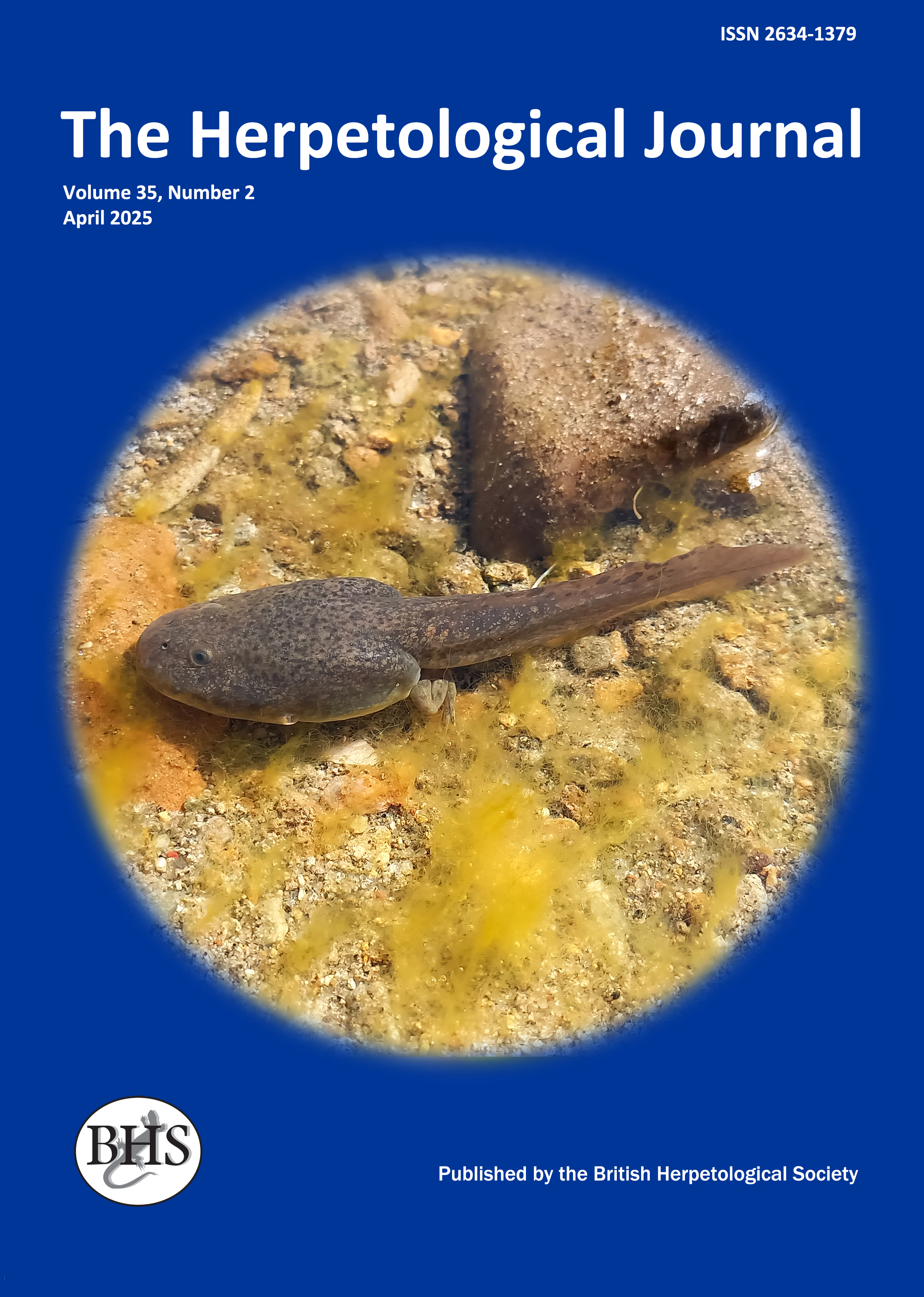
The Herpetological Journal
The Herpetological Journal is the Society's prestigious quarterly scientific journal. Articles are listed in Biological Abstracts, Current Awareness in Biological Sciences,Current Contents, Science Citation Index, and Zoological Record.
ISSN 0268-0130
2021 Impact Factor from Clarivate for the Herpetological Journal is 1.194, an increase of 0.332 from 2020.
pdf 08. A chytridiomycosis epidemic and a severe dry season precede the disappearance of Atelopus species from the Venezuelan Andes
1972 downloads
Open Access
pp. 395-402
Authors: Lampo, Margarita; Rodríguez-contreras, Argelia; La Marca, Enrique & Daszak, Peter
Abstract: Chytridiomycosis has been identified as one of the major forces driving global amphibian declines. Between 1988 and 1994, five Atelopus species endemic to the Venezuelan Andes disappeared. We examined histological samples of Andean Atelopus species available in Venezuelan museum collections for the presence of the chytrid fungus Batrachochytrium dendrobatidis. When infection was detected, sympatric species were examined to investigate the occurrence of the pathogen and how widespread it was. Infection with B. dendrobatidis is reported for the first time in Atelopus carbonerensis, A. mucubajiensis and A. sorianoi, Mannophryne cordilleriana and an undescribed Leptodactylus species. The spatio-temporal patterns of prevalence of this pathogen in Atelopus individuals, with all infections concentrated in one year but spread over distant locations, suggest that synchronized epidemic outbreaks occurred in populations of these Atelopus species in the years prior to their disappearances. Local climate data indicate that one of the most severe dry seasons recorded in the region since 1970 coincided with these epidemic events. The climatic-linked epidemic hypothesis seems a plausible explanation for the coincidence between the observed amphibian declines, the chytridiomycosis outbreaks and the droughts recorded in that area.
Keywords: CLIMATE CHANGE, BATRACHOCHYTRIUM DENDROBATIDIS, AMPHIBIAN DECLINES, EMERGING DISEASES

